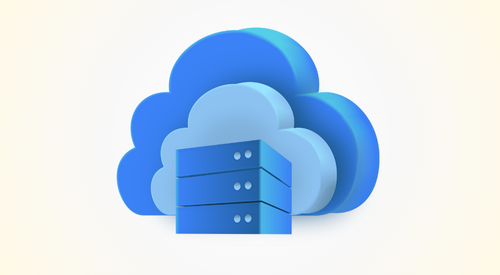

Migration is a complex process, an event that requires a number of careful considerations, planning, and execution. It should also be approached with the same care as when one would plan to move to a new house. Similar to moving to a new house, which requires understanding the reasons for the move, a cloud migration strategy for IT systems demands equal attention and effort. This blog covers the complexities associated with cloud migration strategy, using an analogy that all of us can get familiar with: moving house. We will walk through each stage of the whole journey of migration, starting from “why to move” and getting sponsorship from top-down to actual execution and then after support. We have also shared our personal experiences, useful insights on what went right, wrong, and the lessons learned. This information is thus meant to equip practitioners involved in similar projects with practical guidance.
Accelerate Your Cloud Journey with Niveus
Analogy: Migrating to Cloud is Like Moving Houses
Imagine you’re planning to move to a new house. The first step is to understand why you’re moving. Is it to be closer to work, to enjoy better amenities, or to live in a safer neighborhood? Similarly, in IT migrations, understanding the reason for the move—whether it’s to improve performance, reduce costs, or enhance security—is crucial. This understanding helps in evaluating whether the migration is worth the cost and effort and ensures that all stakeholders are aligned with the decision.
IT migration challenges are like moving houses; like houses could be from a small town to a big city, migration is moving from one data center to another, or from on-premises infrastructure to the cloud. Hence, availability and maturity of cloud services in the target region drive the decision to a great extent, just like you would consider the infrastructure and amenities of the new city before you move there.
When moving to a different state or country, you would need to consider the legal requirements, cultural differences, and changes in lifestyle. In the same way, IT migrations require a decision on whether to perform a lift-and-shift (akin to moving within the same city) or to migrate and modernize (like relocating to a different state or country). This involves keeping an inventory of systems and applications, identifying what needs to be moved, and determining what can be left behind or decommissioned.
Experience matters in both scenarios. Just as you would rely on experienced movers to handle your belongings with care, skilled IT professionals are essential to ensure a smooth migration. These experts can design the migration strategy, manage the transition, and ensure that all critical components—such as governance, security, reliability, and resilience—are addressed in the new environment.
In the case of a move, you would be protective about your things. Likewise in IT migrations, compliance comes first, followed by validation and protection against data loss. Ensuring the cloud migration plan meets the downtime requirements of the business and maintaining the SLAs is similar to planning how long you can cope without your household items during a move.
Finally, just as you would update your address with all relevant parties, IT migrations require updating IP addresses, DNS records, and informing vendors of the changes. Selecting the right partner or vendor to assist with the move—whether it’s a moving company for your home or a cloud provider for your IT systems—can make all the difference.
What Worked: Key Success Factors in Our Migration
Through our migration experience, we identified several key factors that contributed to a successful outcome. While each migration is unique and may present its own challenges, the following practices proved invaluable for us:
- Business Case Analysis:
Before initiating the migration, we conducted a proper business case analysis. It helped in understanding the need for migration, what would be the main drivers from the business perspective, and whether the objectives from the migration were in accordance with the overall business objectives. Key stakeholders and project sponsors were involved right at the start of the initiative to get their buy-in and continuous support.
- Comprehensive Assessment of the Existing Environment:
We assessed the current environment in detail by mapping applications against business processes, technologies, and practices. This inventory helped inform us with important insights on resource usage, dependencies, and potential risks that would enable us to plan the migration more effectively.
- Understanding Compliance Requirements:
Compliance with regulatory standards and cloud migration best practices was our top priority. We identified all relevant compliance requirements early in the process and incorporated them into our cloud migration plan, ensuring that data protection and security were maintained throughout the transition.
- Downtime Management:
We assessed carefully the downtime requirements for each application and set this against existing SLAs and SLOs. This helped us in planning the migration in a way that would minimize disruption to business operations.
- Dedicated Migration Team:
We established a dedicated migration team that would comprise the experts of Networking, Database, Applications, and Cloud Services. This would provide the necessary expertise needed to guide and support that everything was running smoothly in the transition, aligned coordinated efforts across departments while sorting out problems as they came up.
- High-Level and Detailed Design:
We worked out both high-level and detailed designs for migration. The high-level design included network, application, and security considerations along with key decisions, risks, and mitigations. It consisted of a detailed design covering every component in detail: prerequisites and dependencies of those components, the steps of their migration, the backup plans, monitoring, costing, security, and compliance.
- Solid Testing Plan:
Testing was an important component of our migration strategy. We followed the cloud migration best practices for component testing, integration testing, cost validation, and functional testing to ensure that all systems were working fine before the final cutover.
- Categorization and Modernization of Applications:
We categorized applications into legacy and modern categories and developed a modernization roadmap where needed. For stateful applications and databases, we paid special attention to ensure their migration was handled with care.
- Use of Migration Tools:
Since there was a need for automation, monitoring, and IaC, migration tools were heavily used in this process. We have also noticed areas that can be automated with tools such as Terraform for IaC and Ansible for configuration management.
- Effective Communication and Decision-Making:
We established a clear RACI matrix, escalation paths, and stakeholder mapping, which facilitated quick decision-making and reduced delays. Protecting the project scope and timeline was essential to prevent scope creep and ensure timely completion.
- Cutover and Backout Planning:
We properly planned the cutover process with database promotion, application deployment, DNS updates, and developed a backout plan to minimize the effect on production if any unforeseen issues arose.
- Post-Migration Feedback and Handover:
After the migration, we gathered feedback and made necessary improvements. We also ensured that comprehensive documentation and handovers were provided to the SRE or cloud operations team for ongoing management.
What Didn’t Work: Lessons Learned from Our Challenges
Despite our successes, there were several challenges that we encountered during the migration process. These challenges offer valuable lessons for future projects:
- Overplanning:
Planning is important, but overplanning can at times be very unhelpful. Too much emphasis on processes and procedures can squeeze out innovation and delay the real migration. There has to be a fine balance between planning and action.
- Mixing Migration and Modernization:
This goes with the combination of migration and modernization, especially for complex applications. It is best to always begin with simple, lift-and-shift migrations first, then plan modernization after migration to ensure the right skills, resources, and time are available for that activity.
- Lack of Monitoring and Backup:
Inadequate monitoring and backup provisions can cause data loss and extended periods of downtime. Effective monitoring and backup strategies are crucial to help ensure that any potential pitfalls are addressed in the migration.
- Unrealistic Timelines:
If the timeline set up is unrealistic, the project will definitely encounter delays, and extra pressure falls on the migration team. Setting realistic timelines is important, as one has to be very clear about the complexity of the projects at hand and the resources available.
- Insufficient Stakeholder Management:
Failure to engage stakeholders and project sponsors effectively can result in a lack of support and direction. Regular communication and involvement of stakeholders are key to maintaining alignment and securing the necessary resources.
- Governance Model and Framework Gaps:
In absence of a governance model and framework on decision-making, progress may get hampered and can be confusing. This therefore calls for clearly laying out the governance structures and details of processes of making decisions for successful migration.
- Vendor Lock-In:
Vendor lock-in can limit flexibility and increase costs in the long term. It’s important to evaluate vendor offerings carefully and consider options that allow for flexibility and future scalability.
- Resource Planning and Skill Gaps:
Poor resource planning and the presence of skill gaps in the team may cause delays and impact the quality of migration. Resource supply and upskilling of critical talent are vital to overcome such challenges.
Conclusion
Migration, like house relocation, is a very involved and multi-dimensional process. We drew parallels between the two and brought out the need for understanding the reasons for why migration is necessary, getting stakeholder buy-in, addressing compliance and minimizing downtime, and resource planning.
Our migration experience has taught us lessons—both what worked and what didn’t. Sharing the insights, it is our hope to guide others who embark on similar journeys. Our Niveus team, an experienced Google Cloud partner, has the necessary aid and experience for a successful migration.
For more detailed frameworks and guidance, we recommend consulting Google’s migration articles and reaching out to our team for tailored solutions.











